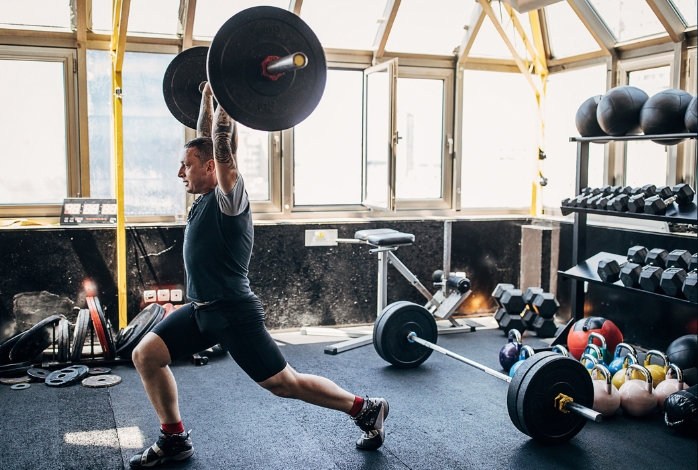
When it comes to strength sports, two disciplines come to mind: Olympic lifting and bodybuilding. Both are challenging, rewarding, and require consistent discipline and hard work. But when it comes to sheer strength, which of these two sports reigns supreme?
Olympic lifting and bodybuilding are two distinct and popular strength sports that require athletes to perform a variety of demanding exercises. Olympic lifting entails lifts such as the snatch and the clean and jerk, whereas bodybuilding focuses on exercises such as bench presses, squats, and deadlifts. The fundamental difference between the two sports lies in their training and goals. Olympic lifters aim for proficiency in specific lifts, while bodybuilders aim for overall muscle development.
In this blog post, we’ll take an in-depth look at Olympic lifting and bodybuilding, from their fundamental differences and key performance metrics to the science behind muscle strength and hypertrophy. We’ll also debunk common misunderstandings and myths and provide useful advice for beginners. By the end of this post, you’ll have a clear understanding of both sports and which one may be right for you.
Defining Strength: Olympic Lifting vs. Bodybuilding
In Olympic lifting, strength is primarily defined by an athlete’s maximum weight lifted in the snatch and clean and jerk. This requires a combination of raw power, technique, and precision. On the other hand, bodybuilding is judged not only on strength but also on overall aesthetics, symmetry, and muscle size. Bodybuilders aim to sculpt their physique to create a visually pleasing appearance, focusing on developing each muscle group to its fullest potential.
When it comes to performance metrics, Olympic lifters are evaluated based on their one-rep max, which represents the maximum weight they can successfully lift in a single repetition. In addition to this, speed and explosiveness are crucial factors that contribute to their success in executing the lifts with efficiency and precision.
In contrast, performance in bodybuilding is more subjective and relies on the judgment of a panel of experts. They evaluate factors such as muscle definition, proportion, and posing techniques to determine the overall presentation of the physique. The goal in bodybuilding is to showcase the hard work and dedication put into building a well-rounded and aesthetically pleasing physique.
While both Olympic lifting and bodybuilding have their own unique aspects and goals, they both require dedication, discipline, and a passion for pushing the limits of human strength and aesthetics.
Training Techniques: Olympic Lifters vs. Bodybuilders
While both Olympic lifting and bodybuilding involve weightlifting, the training techniques and goals differ. The key difference lies in the ultimate objectives: Olympic lifting prioritises strength and power for performance in competitions, while bodybuilding focuses on overall muscle size and appearance for aesthetic purposes.
A typical training regimen for Olympic lifters includes high-intensity, low-repetition exercises that focus on strength and power development. These exercises often involve movements like the snatch and clean and jerk, which require explosive strength and technique. Olympic lifters also prioritise compound exercises that engage multiple muscle groups simultaneously.
On the other hand, bodybuilders adopt a high-volume, low-to-moderate intensity approach that focuses on muscle hypertrophy. They often perform exercises targeting specific muscle groups with the goal of creating size and definition. Bodybuilders also incorporate isolation exercises to target individual muscles and achieve a balanced physique.
By understanding these differences, individuals can choose the training approach that aligns with their specific goals and preferences, whether it’s pursuing strength and power or aiming for muscle hypertrophy and aesthetics.
Strength in Action: Comparing Olympic Lifters and Bodybuilders
When it comes to real-world examples of strength in action, Olympic lifters have a significant advantage in explosive power. They can generate force more quickly and efficiently than bodybuilders due to their training regimen. Bodybuilders, on the other hand, excel in activities that require sustained strength and endurance such as powerlifting competitions. The world’s best Olympic lifters and bodybuilders are both examples of incredible strength, with athletes like Hafthor Björnsson holding the world record for deadlift (501 kg) and Olympic lifter Lasha Talakhadze holding the record for the heaviest clean and jerk (264 kg).
The Role of Diet and Nutrition
Dietary differences between Olympic lifters and bodybuilders can be quite extreme. In order to support their muscle growth and recovery, Olympic lifters need to consume substantial amounts of protein and carbohydrates. These macronutrients play a crucial role in providing the necessary fuel and building blocks for their intense training sessions.
On the other hand, bodybuilders have a different focus when it comes to their diet. They strive to achieve a lean and ripped physique, which requires them to consume fewer calories than they burn. By creating a calorie deficit, bodybuilders aim to shed excess body fat while preserving their hard-earned muscle mass.
While nutrition is vital for both types of athletes, the emphasis differs based on the specific demands and goals of their respective sports. Olympic lifters prioritise the nutritional aspects that support strength, power, and recovery, while bodybuilders place greater emphasis on achieving a low body fat percentage and sculpting their physique to perfection.
The Science Behind Muscle Strength and Hypertrophy
From a scientific perspective, muscle growth and strength are closely related. However, the composition of the muscles varies between Olympic lifters and bodybuilders, leading to differences in their training approaches and areas of expertise.
Olympic lifting demands a balanced development of both slow and fast-twitch muscle fibres. The explosive movements involved in this sport require the activation of fast-twitch fibres for quick bursts of power. On the other hand, bodybuilding primarily focuses on the development of slow-twitch muscle fibres, which are responsible for endurance and sustained muscle contractions.
These differences in muscle composition and training methodologies explain why different athletes excel in specific areas of strength training. Olympic lifters often showcase exceptional power and explosive strength, while bodybuilders exhibit impressive muscular endurance and size.
Common Misconceptions and Myths
One of the most common myths about bodybuilding is that it exclusively focuses on building functional strength. While bodybuilding primarily aims to enhance overall muscle size and appearance, it is important to note that functional strength development requires more than just muscle size. It involves specific training techniques and exercises that target functional movements, enabling individuals to perform everyday activities with ease.
Moreover, it is worth mentioning that Olympic lifting, often perceived as a male-dominated sport, has seen a significant rise in successful female Olympic lifters who have shattered the gender stereotype. These inspiring women have showcased their exceptional strength, skill, and dedication, proving that Olympic lifting is a sport for everyone, regardless of gender.
Choosing Your Path: Which Sport is Right for You?
The choice between Olympic lifting and bodybuilding ultimately depends on your personal goals, preferences, and even your body type. If you are looking to develop explosive strength and power, Olympic lifting with its focus on compound movements and dynamic lifts like the snatch and clean and jerk could be the perfect fit for you. On the other hand, if your main goal is to build overall muscle size and achieve a sculpted appearance, bodybuilding with its emphasis on isolation exercises and hypertrophy training may be more suited to your needs.
However, it’s important to note that these two disciplines are not mutually exclusive. Many athletes and fitness enthusiasts incorporate elements of both Olympic lifting and bodybuilding into their training routines to maximise their athletic performance and aesthetic goals. Ultimately, the best approach is to explore and experiment with both disciplines, seeking guidance from experienced coaches or trainers, to determine which one better aligns with your interests, goals, and unique physiological characteristics. Remember, it’s not just about the end result, but also about enjoying the journey and finding what works best for you.
Conclusion: The Strength Debate Resolved
In conclusion, it is important to recognise and appreciate the distinct strengths and benefits of both Olympic lifting and bodybuilding. Olympic lifting, with its focus on explosive power and technique, can enhance overall athletic performance and develop functional strength. On the other hand, bodybuilding offers the opportunity to sculpt and shape the physique through targeted muscle hypertrophy and aesthetic development.
Both sports require unwavering dedication, discipline, and hard work to excel. They provide a platform for personal growth and development, instilling qualities such as resilience, perseverance, and mental toughness. Furthermore, participating in either Olympic lifting or bodybuilding opens doors to a community of like-minded individuals, fostering connections and support networks that can amplify motivation and progress.
Ultimately, the choice between Olympic lifting, bodybuilding, or even embracing both depends on individual preferences, goals, and lifestyle. It is crucial to select a sport that aligns with your interests and aspirations, allowing you to fully immerse yourself in the journey towards strength and self-improvement. By embracing consistency, commitment, and a growth mindset, you will unlock your true potential and achieve remarkable feats in either discipline.
Want to dive deeper into strength training? Study Olympic lifting and strength and conditioning at Onfit Training College.

